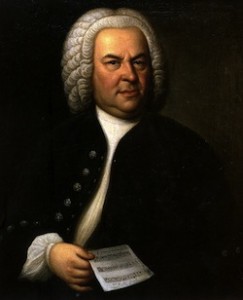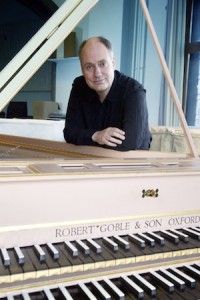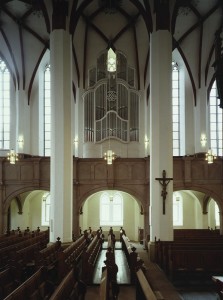Mira is still under the weather, but for the first time since last Sunday both Celia and Mira are (for the time being) sleeping in their own beds. Hopefully I can get back to the tradition of the girls choosing the ‘DAC’ discs soon. But I tried my best by closing my eyes and grabbing some Bach off the shelf. I grabbed a couple of different recordings of the ‘St. Matthew Passion’ as well as a Brandenburg Concertos recording and a recording of the sonatas for violin and continuo for tonight.
My senior year at UC Berkeley I was very fortunate to take a class on Bach by Prof. John Butt. Tamiko had taken a more general Bach survey from him during one of her first years at Cal and he was one of her favorite professors. He was an amazing performer, great lecturer and VERY funny (Tamiko made a comment once that it was like having Monty Python teach her about Bach). While I was going through the major, I eagerly anticipated each semester’s course schedule to see if Prof. Butt was teaching a Bach class, and he finally did my senior year. The course was a much smaller seminar and focused on Bach’s Passions (and the tradition that they came out of). There were five of us in the class and we spent 12 of the 17 weeks just looking at the two Bach pieces. I had never looked at any pieces in such depth before, and while getting to spend most of an entire semester with Bach I also learned a huge amount about how to look at music itself. A couple years ago, Prof. Butt (who left Cal for Cambridge in the late 90s) released a recording of the ‘St. Matthew Passion’ with the Dunedin Ensemble. Like Joshua Rifkin’s recordings of the B Minor Mass and a few of the cantatas, the John Butt ‘St. Matthew Passion’ is recorded with a single performer on a part. While performances usually range from large modern orchestras and choirs to smaller baroque ensembles, a good amount of research shows that one player per part performances were a good possibility during Bach’s time. This performance (along with the Rifkin recordings) present convincing arguments. The pieces present the music with a clarity that I had never heard before, and it is amazing how much more can be heard with a smaller ensemble.
The other recording of the St. Matthew I pulled tonight is the John Eliot Gardiner recording with the Monteverdi Choir. These were actually the recordings we used as a reference in John Butt’s class. At the time of their recording they were one of the first period instrument recordings of these works. The performance is very dramatic, and if you have only heard recordings of this piece with larger forces (like most of the recordings from the ’50s and ’60s), I highly suggest finding the Gardiner recording.
The Brandenburg Concerto recordings are by ‘Il Giardino Armonico’. The performances are lively and fun. Tamiko and I had a chance to see the group perform Bach and Vivaldi in the 90s (also at Berkeley) and it was one of the most enjoyable concerts I’ve ever seen. I don’t know if I have ever seen a group play with such big smiles before. Between the first and second movements of the Vivaldi concerto they opened the concert with, there was some clapping (which doesn’t bother me personally as much as it does many musicians). The players in the group paused and acknowledged the applause, then played the rest of the first half of the concert without a single break… one movement into the next with only a brief breath in between. The line between pieces was broken down, and the audience could do nothing but listen for about an hour. The result was wonderful. No one was worried about clapping at the right time, and after about 20 minutes I remember feeling like the group had taken their energy and were propelling us along with them.




